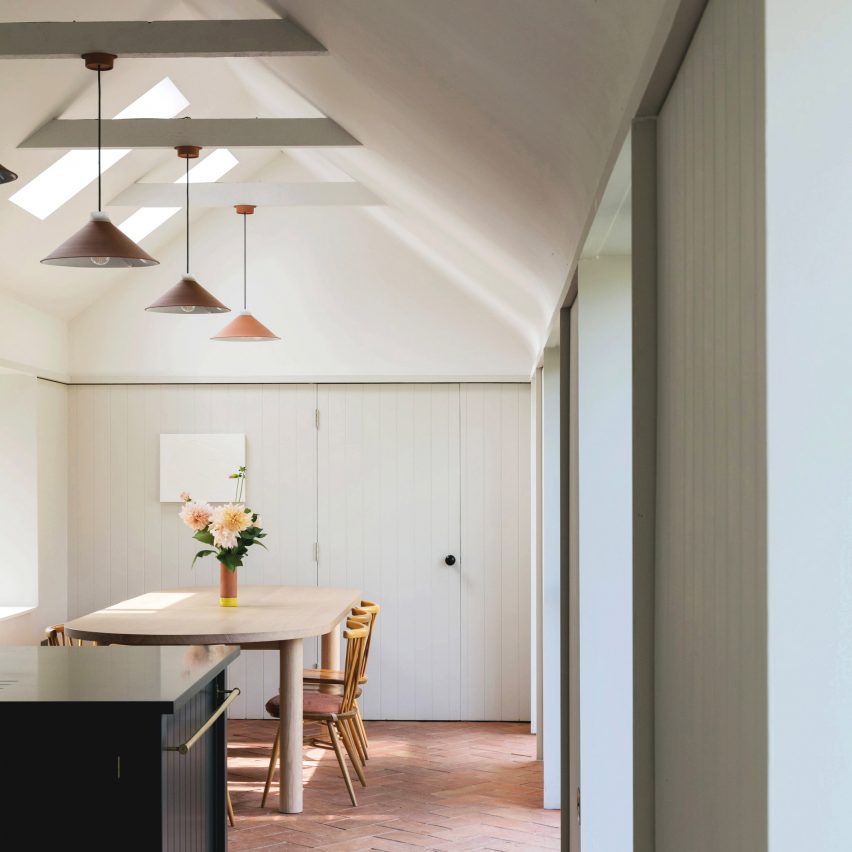
Emil Eve Architects has extended a farmhouse in Wiltshire, England, by adding a kitchen that features terracotta tiles both inside and out.
Called Farley Farmhouse, the project involved infilling a portion of unused outdoor space, to create more space for cooking and dining.

“The existing kitchen was tiny and completely out of proportion to the house,” said Emma Perkin, who co-directs Emil Eve Architects with partner Ross.
“It did not meet the needs of our clients, who love to cook.”
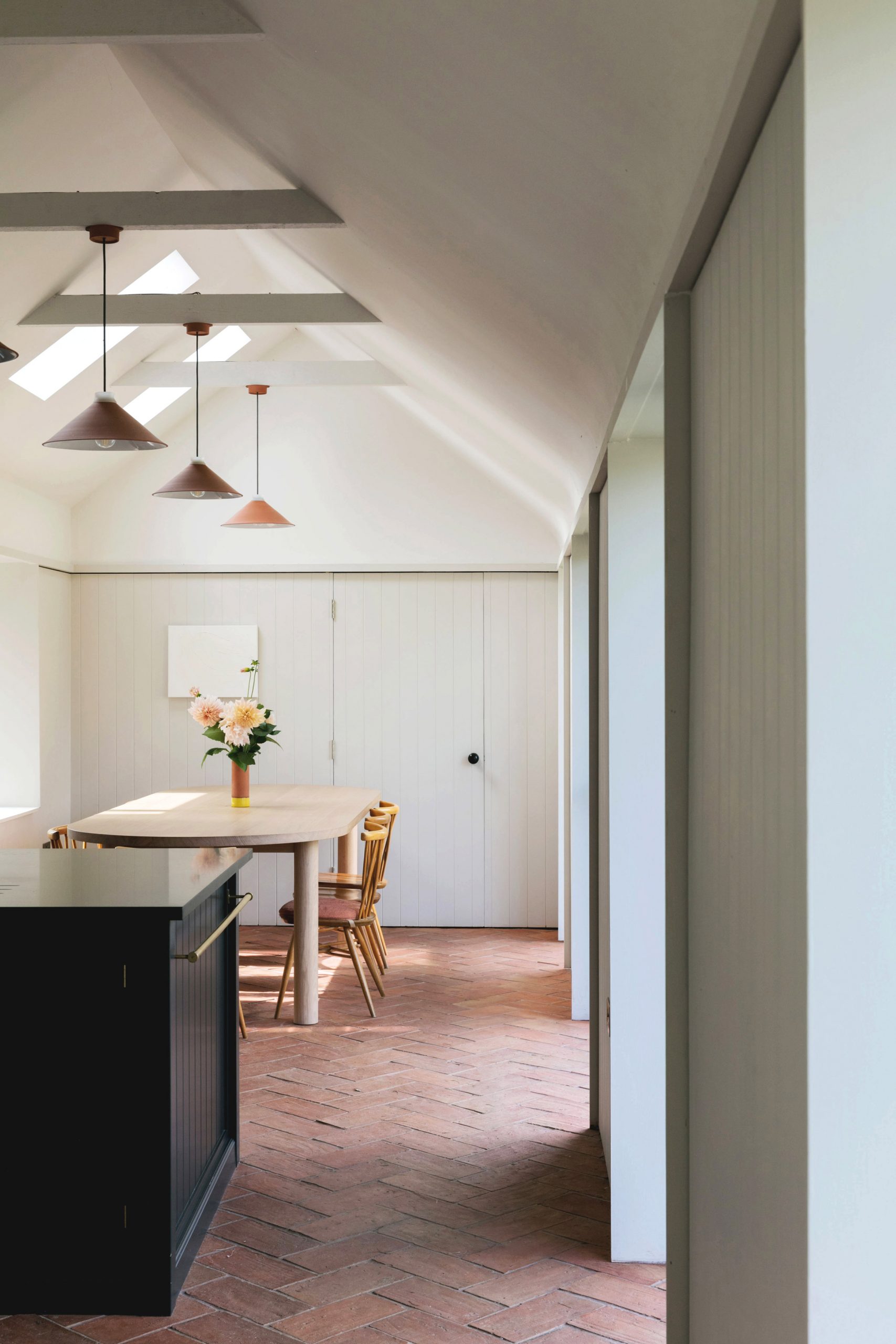
Like many English farmhouses, the house already comprised various buildings of different sizes. What they all had in common was a material palette dominated by terracotta, in the form of both bricks and tiles.
Emma and Ross decided to continue this tradition, by creating a new terracotta insertion. Their design involved upgrading and extending the existing utility wing and fronting it with a new tile-clad gable.
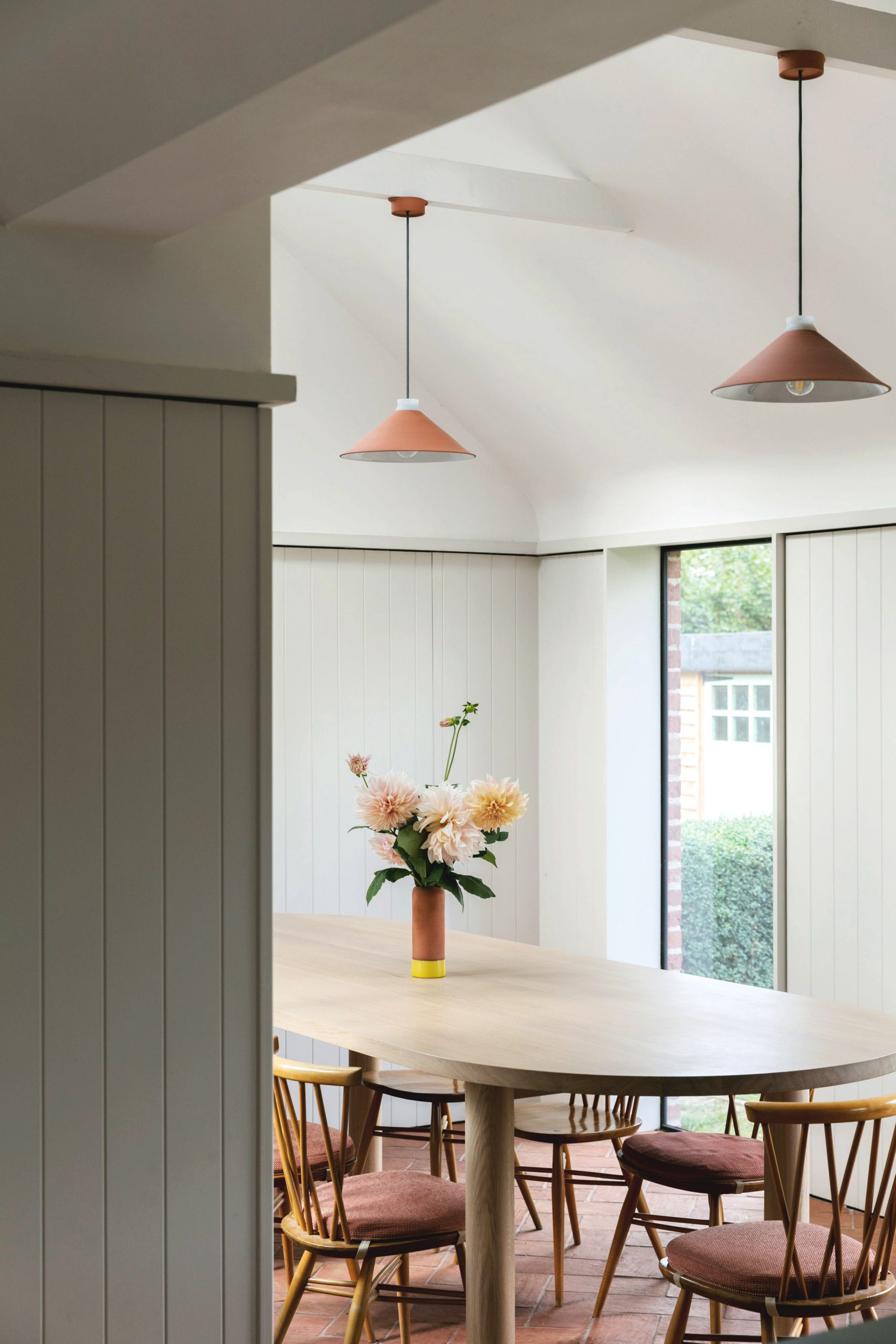
“We loved the arrangements of different roof pitches and forms of the existing house and wanted to create an addition that was harmonious with these in form and materiality,” Emma told Dezeen.
“The earthy and textured palette became the main starting point when considering the materials we would use both internally and externally.”
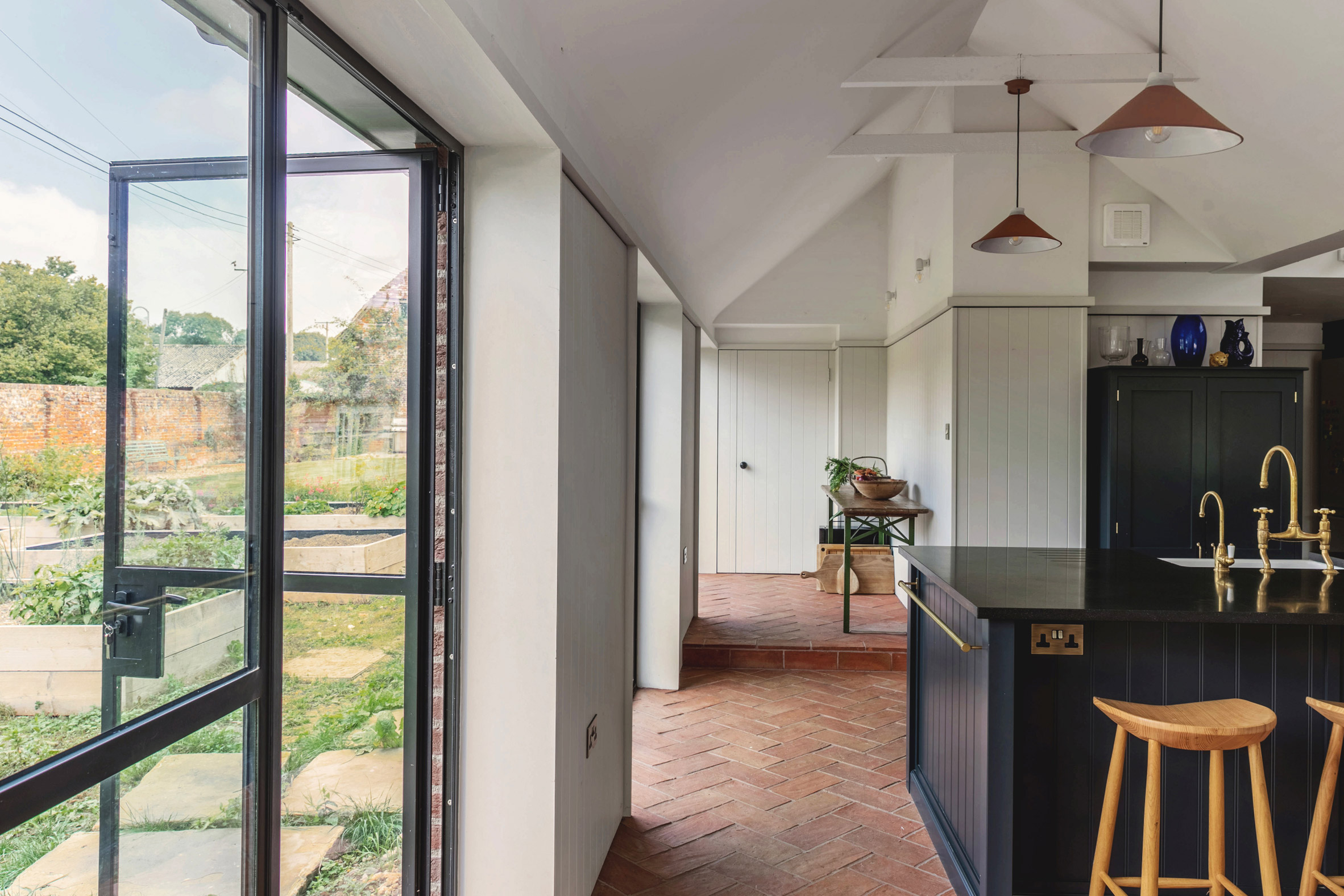
They chose arrowhead tiles for the exterior, which create hexagon shapes in a variety of tones. This creates a contemporary feel, giving the extension some visual difference from the rest of the building.
The palette continues inside, where rectangular tiles create a herringbone pattern on the floor. Similarly, pendant lights hanging from the wooden roof beams are also made from clay.
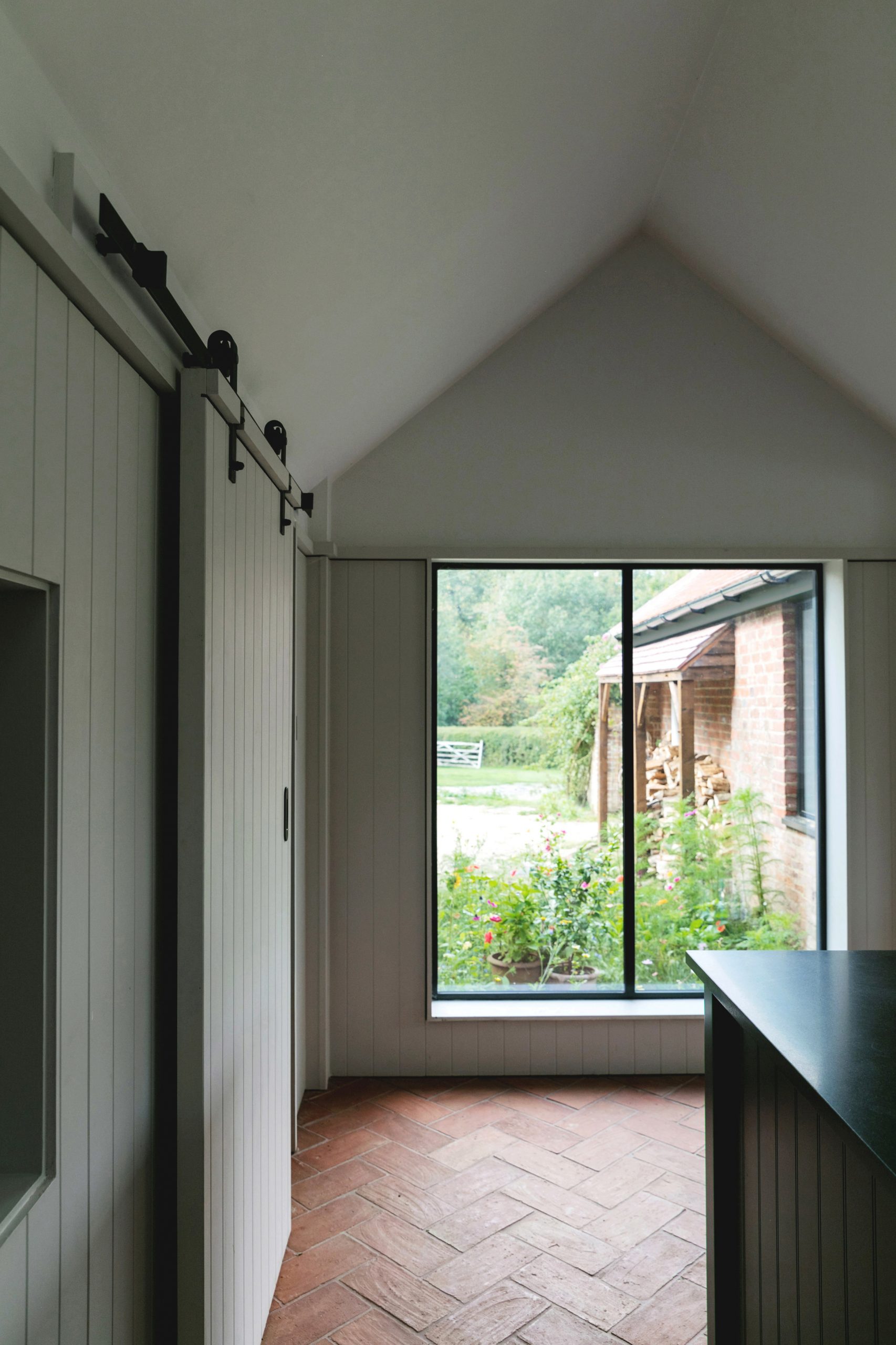
Other details offer a similar mix of contemporary and traditional styles.
The walls are lined in timber panels, referencing existing wainscotting elsewhere in the house. They are painted in a neutral, green-toned shade that complements the materials palette.
Meanwhile, the glazing is more modern, with door and windows surrounded by slender black frames and powder-coated steel sills.
The kitchen centres around a dark-painted island unit with a slate worktop, while a wooden table creates a space where up to eight can dine together.
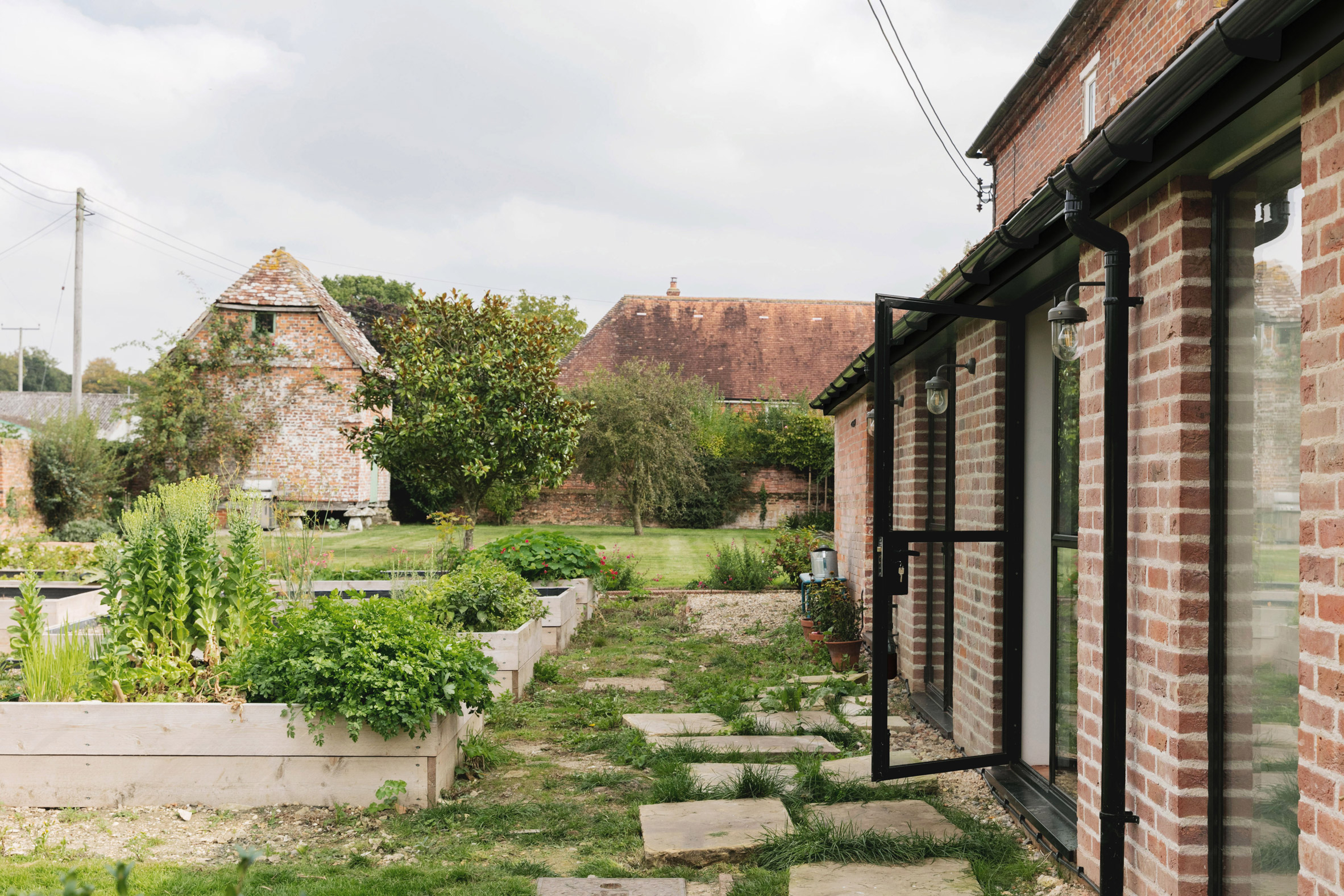
The project began before the Covid-19 pandemic. The clients – a couple with one young child, and others away at university – had bought the property as a second home, allowing them to escape London at the weekends.
During the period of national lock-down, the family made this home their base. This proved so successful, they decided to make it their permanent home.
“Lockdown life gave them the opportunity to reassess their priorities,” added Emma. “Now have a kitchen and dining room, which allows them to fully enjoy their house.”
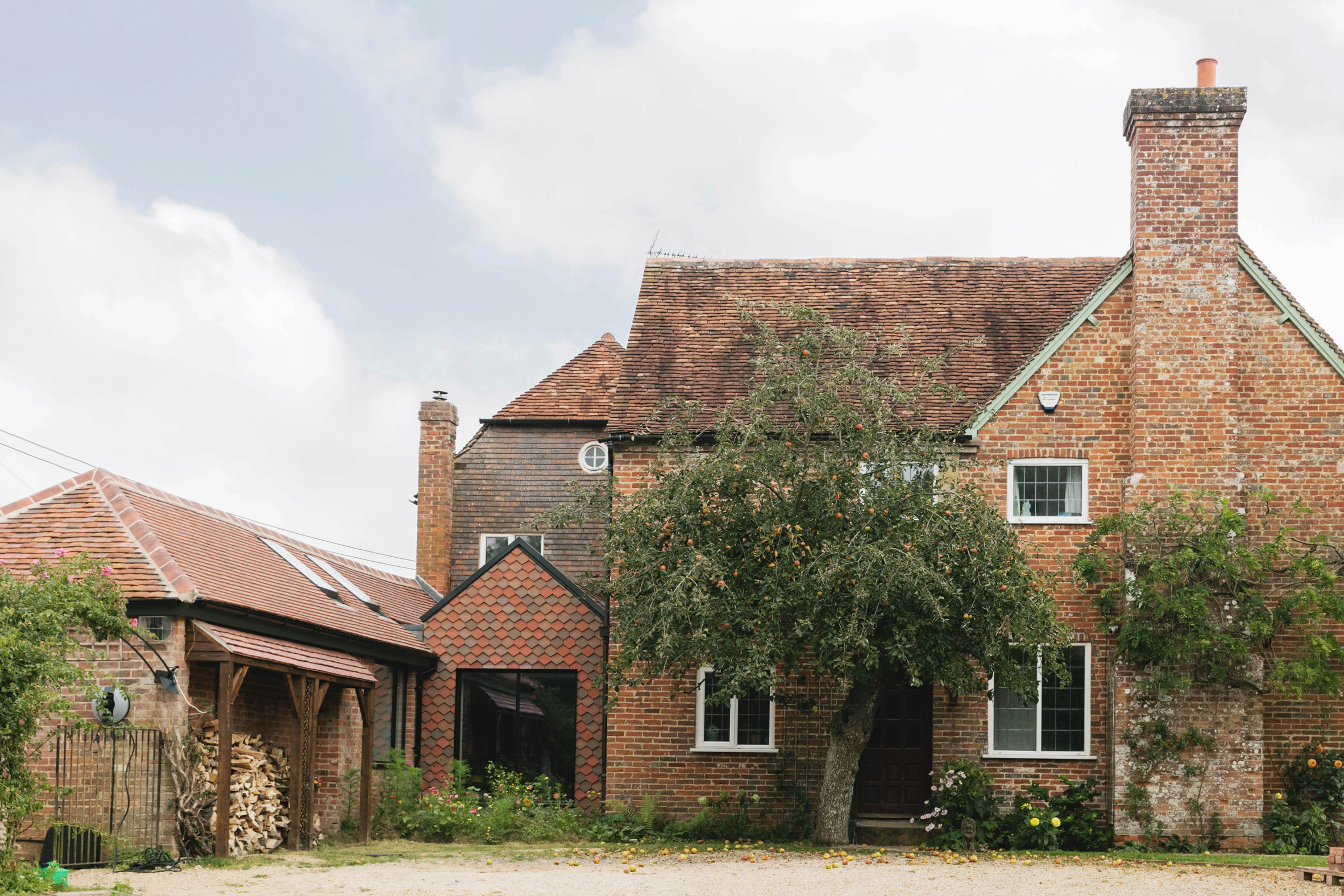
Emma and Ross founded their studio in 2009, in east London. Their other projects include the conversion of a Victorian warehouse and the Caro Somerset lifestyle store.
Photography is by Mariell Lind Hansen.
The post Terracotta tiles add warmth to Wiltshire farmhouse kitchen by Emil Eve Architects appeared first on Dezeen.